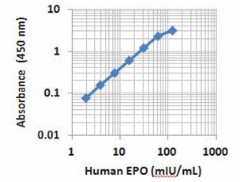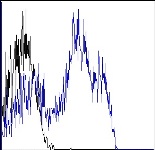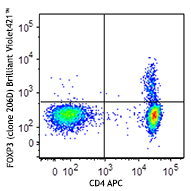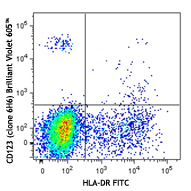- Regulatory Status
- RUO
- Other Names
- Hematopoietin
- Ave. Rating
- Submit a Review
- Product Citations
- publications

Erythropoietin (EPO) is the most important hormone regulating erythropoiesis. It is a glycoprotein also known as hematopoietin. Human EPO is mainly produced by kidney and liver in response to hypoxia to induce red blood cell synthesis. EPO is a secreted protein of 166 amino acids with a predicted molecular mass of ~18 kD. However, it migrates on SDS-PAGE at ~35-55 kD due to heavy glycosylation. Human EPO is closely related to thrombopoietin (TPO), sharing 44% amino acid homology. EPO is highly conserved across species, with human EPO being 80% identical to mouse, and mouse EPO being 95% identical to rat.
EPO functions through binding to its receptor, EPO R, a homodimer, on erythoid precursors, and promotes their differentiation and maturation. As expected, serum levels of EPO are elevated in response to various conditions that result in tissue hypoxia (e.g. blood loss, high altitude, cardiac or pulmonary disease, and anemia). Increased EPO levels can also be due to increased production by cancer cells of the liver and kidney. Decreased levels of EPO are often seen with chronic renal failure and other chronic diseases or chemotherapy, whcih cause anemia. Human endogenous EPO and recombinant EPO share the same amino acid sequence, with differences in the glycosylation profiles.
The LEGEND MAX™ Human EPO ELISA kit is a Sandwich Enzyme-Linked Immunosorbent Assay (ELISA) with a 96-well strip plate that is pre-coated with a mouse monoclonal anti-human EPO antibody. The Detection Antibody is a biotinylated mouse monoclonal anti-human EPO antibody. This kit is specifically designed for the accurate quantitation of human EPO from cell culture supernatant, serum, plasma (heparin, EDTA and citrate), urine, and other biological fluids. This kit is analytically validated with ready-to-use reagents.
Kit Details
- Kit Contents
-
- Anti-Human EPO Pre-coated 96 well Strip Microplate
- Human EPO Detection Antibody
- Human EPO Standard
- Avidin-HRP
- Assay Buffer A
- Wash Buffer (20X)
- Substrate Solution F
- Stop Solution
- Plate Sealers
- Materials Not Included
-
- Microplate reader able to measure absorbance at 450 nm
- Adjustable pipettes to measure volumes ranging from 1µL to 1,000 µL
- Deionized water
- Wash bottle or automated microplate washer
- Log-Log graph paper or software for data analysis
- Tubes to prepare standard dilutions
- Timer
- Plate Shaker
- Polypropylene vials
Product Details
- Verified Reactivity
- Human
- Application
-
ELISA
- Product Citations
-
- Sensitivity
- 0.25 mIU/mL
- Standard Range
- 2.0 - 125 mIU/mL
Antigen Details
- Biology Area
- Cell Biology, Signal Transduction
- Molecular Family
- Cytokines/Chemokines, Growth Factors, Immune Checkpoint Receptors
- Gene ID
- 2056 View all products for this Gene ID
- UniProt
- View information about Erythropoietin on UniProt.org
Related FAQs
- In your LEGEND MAX™ ELISA Kits, there is a step that calls for washing the plates before adding sample. What is the purpose of this step?
-
We typically use a stabilizer for pre-coated plates. The additional washing step is designed to remove these components before you start the assay. If you do not perform the washing, the effect on assay performance is negligible.
- I have multiple LEGEND MAX™ ELISA kits that I want to run simultaneously. Can I use the same wash buffer for all the kits?
-
The wash buffer provided in all our LEGEND MAX™ kits is the same and the part numbers on the wash buffer bottles in these kits should be identical. For ELISA MAX™ Deluxe and ELISA MAX™ Standard Sets, we provide a recipe for the wash buffer on each kit’s technical data sheet. This recipe is the same for all ELISA MAX™ sets.
- For some of your ELISA kits, why do my serum samples require dilution with assay buffer?
-
In some cases, dilution with assay buffer is required to minimize the matrix difference between the samples and the standards to achieve better accuracy.













Follow Us